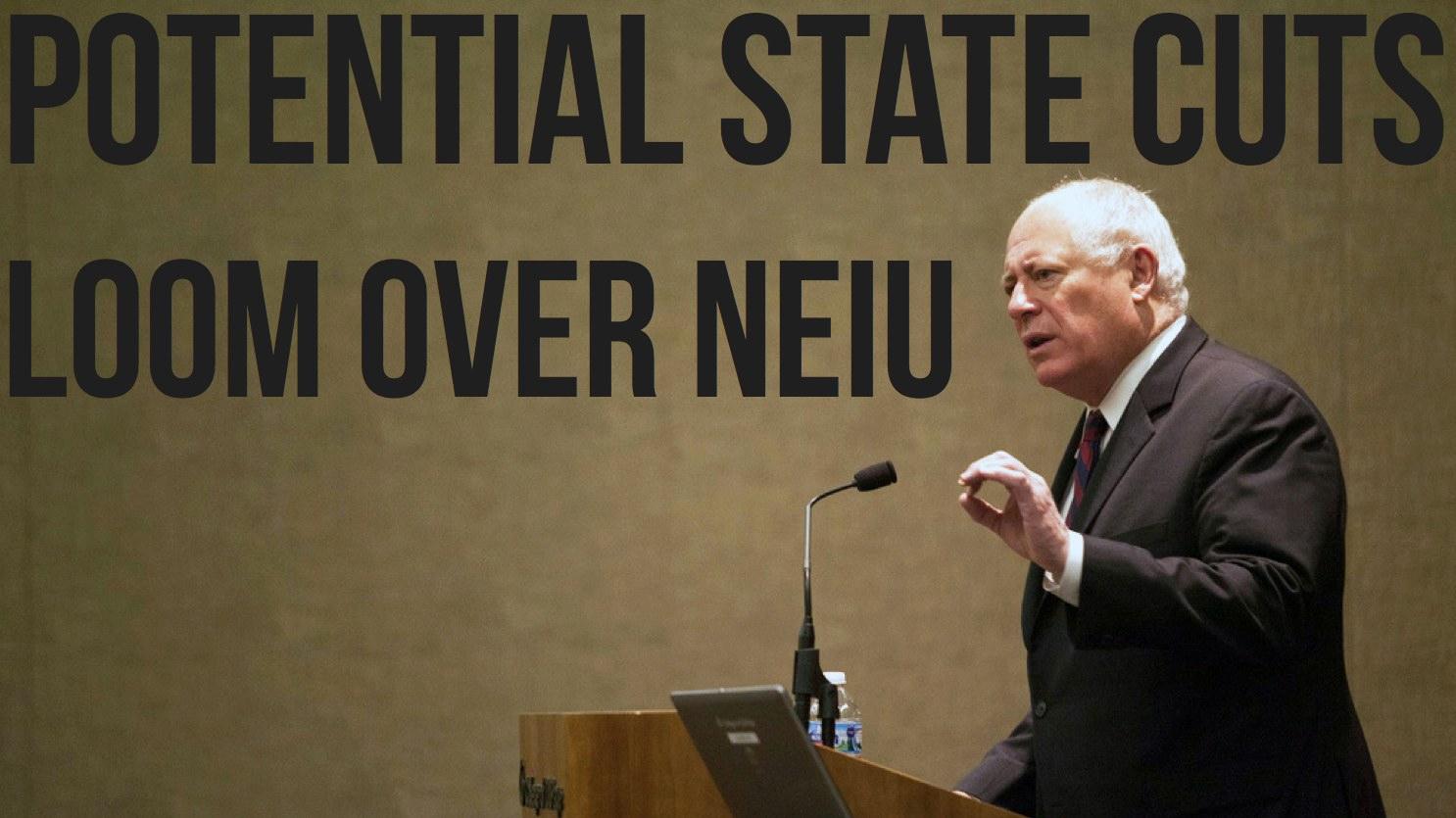Potential State Cuts Loom Over NEIU
April 29, 2014

NEIU could lose a significant amount in state funding depending on the outcome of the current budget debate. Illinois Gov. Pat Quinn plans to oppose major cuts in state spending on social services and higher education with a proposal to extend the current “temporary” 67 percent tax hike.
Cuts in state funding could mean serious repercussions for Northeastern; as one of the nine state schools receiving funding from the state, Northeastern’s state appropriations today make up 40 percent of the overall NEIU budget (37.8 million), according to VP for Finance and Administration Michael Pierick.
If Gov. Quinn’s budget passes as it stands with the extended raised income tax, Northeastern is likely to see level funding. According to NEIU’s Vice President of Academic Affairs Richard Helldobler, this would be good.
Helldobler said, however, if the extension does not make it out of legislation, Northeastern is looking at a 5 percent decrease in revenue from state appropriations, which are the tax dollars that the State of Illinois gives to Northeastern for operational purposes.
Pierick said, “When those appropriations peaked, it represented close to 70 percent of our operating cost, but since that peak, state appropriations have declined dramatically, so much so that Northeastern must rely on student tuition and fees to now account for 60 percent of the NEIU budget; double of what it was 14 years ago.”
As of August 2012, the state debt was calculated at a $47.2 billion, according to the Illinois Comptroller’s website, landing Illinois in the top 5 states with the highest amount of debt, and christening Illinois the 48th worse managed state in the country (50 being California).
High state debt has resulted in the overtime decrease in state appropriations from 70 percent to the current 40 percent.
Couple this with a 7 percent decrease in enrollment over the past five years and operating costs allocated to salary at 81 percent.
“Last year NEIU expected a 4.65 percent decrease in state appropriations, but when the gavel came down, actually ended up with level funding,” said Helldobler.
Although level funding might imply no change in NEIU’s budget, the President’s Report in the latest Board of Trustee’s meeting indicates differently.
The 7 percent decrease in enrollment still required cuts, reallocations and savings which included loss of tenure track faculty positions, reductions in Transportation Alternatives Program (TAP) preparation funds, deferments of maintenance and improvements, closed course schedules and tuition rate increases.
The President’s Report to the Board of Trustees also read, “Using level enrollments and level state appropriations, the most optimistic scenario, the university will need to cut $0.4 million from the current budget to balance next year.”
Pierick agreed with the President’s assertion in an interview with the Independent and said, “Level funding would be great.”
The school could face one of two possible scenarios: level state appropriations with substantial budget cuts or less state appropriations with massive NEIU cuts across the board.
NEIU continues to provide some of the lowest tuition rates in the state, small class sizes, and tuition aid to the majority of its students. The challenge of lower enrollment and dwindling state funds may present that to be an obstacle. Administration is pouring more money into expansion and marketing to get these numbers up. For now, it’s time for NEIU to tighten its belt. Any way you slice it, there will be cuts.








